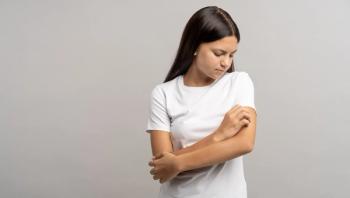
Key Biomarker Monitoring Improves Outcomes in ASCT Recipients With AML, MDS
Donor lymphocyte infusion, both alone and in combination with azacitidine, restored CD34 levels in two-thirds of patients with a baseline CD34 donor chimerism of less than 80%.
The restoration of CD34 full donor chimerism (FDC) following donor lymphocyte infusion (DLI) is associated with reduced relapse and improved overall survival in allogeneic stem cell transplant (alloHSCT) recipients with
Researchers confirmed that DLI, either alone or in combination with azacitidine (AZA), can restore CD34 FDC and is associated with minimal residual disease (MRD) eradication.1 The findings add to evidence that DLI may boost the efficacy of AZA and result in higher responses and longer 1-year event-free survival and overall survival. Patients who received DLI and AZA reached CD34 FDC restoration in a median duration of 1 month following DLI.
“Infusion of blood stem cells from a suitably matched donor into a patient (the recipient) with blood cancer is called allogeneic stem cell transplant. Unfortunately, in about 25%, the blood cancer returns (relapses) after transplant. Some centers use infusion of donor immune cells (DLI) after transplant to prevent relapse, but it is unknown who benefits, and when to use DLI,” coauthor David Curtis, MBBS, PhD, told The American Journal of Managed Care®. “We show that DLI can prevent relapse when administered in patients with the emergence of recipient stem cells. This work provides guidance for safer and effective use of DLI to prevent relapse after transplant.”
This retrospective analysis of 21 consecutive alloHSCT recipients between 2012 and 2023 in Australia who received DLI for CD34 MDC less than 80%, with or without azacitidine, found that nearly 67% achieved CD34 FDC.
Researchers found that the 2-year cumulative incidence of relapse was significantly lower in those with DLI-FDC compared with DLI and mixed DC (DLI-MDC) (21.4% vs 85.7%). Rates of grade II to IV acute graft-vs-host disease (GVHD) post DLI were 14.9%. The 5-year nonrelapse mortality (NRM) of the DLI-FDC group was 7.1% following DLI.
The study excluded patients who did not demonstrate ongoing disease remission on bone marrow biopsy at the time of DLI, and those on immunosuppression medication or who had active GVHD.
A bone marrow biopsy was performed as soon as CD34 DC fell to less than 80% in order to exclude disease relapse and to test for MRD before DLI was administered. Measurements for CD34 DC were taken before DLI and again at 4 weeks after each DLI infusion. Patients who received AZA and DLI were monitored for CD34 DC every 1 to 2 months. The median follow-up period was 2.14 years (range, 0.58-10.1 years).
The median time to first DLI administration was 213 days from the day of alloHSCT, and the median time to detection of less than 80% mixed CD34 DC was 167 days. The median time to DLI administration from the first value of less than 80% was 50 days for the whole group, 24 days for patients who received DLI alone, and 58 days for those who also received AZA.
“These findings suggest that DLI with or without AZA should be considered at an early stage in the setting of falling CD34 DC,” the authors wrote.
AlloHSCT is the only curative option to treat high-risk patients with relapsed AML and MDS, according to the study. Posttransplant relapse is the leading cause of mortality among transplant recipients. The 2-year overall survival is less than 15% for patients who relapse within 1 to 6 months post alloHSCT.
“There are limited studies assessing the efficacy of donor lymphocyte infusion (DLI) triggered by mixed CD34 DC (MDC), in addressing falling chimerism. Our study shows the restoration of CD34 FDC post-DLI is associated with reduced relapse and improved overall survival, with low NRM,” the authors wrote.
References
- Tan JLC, Curtis DJ, Muirhead J, et al. CD34 chimerism directed donor lymphocyte infusion with or without azacitidine results in reduced relapse and superior overall survival when full donor chimerism is achieved in allogeneic stem cell transplant recipients with acute myeloid leukaemia/myelodysplastic syndrome. Clin Lymphoma Myeloma Leuk. Published online July 20, 2024. doi:10.1016/j.clml.2024.07.006
- Chimerism. National Cancer Institute. Accessed September 4, 2024. https://www.cancer.gov/publications/dictionaries/cancer-terms/def/chimerism
Newsletter
Stay ahead of policy, cost, and value—subscribe to AJMC for expert insights at the intersection of clinical care and health economics.








































